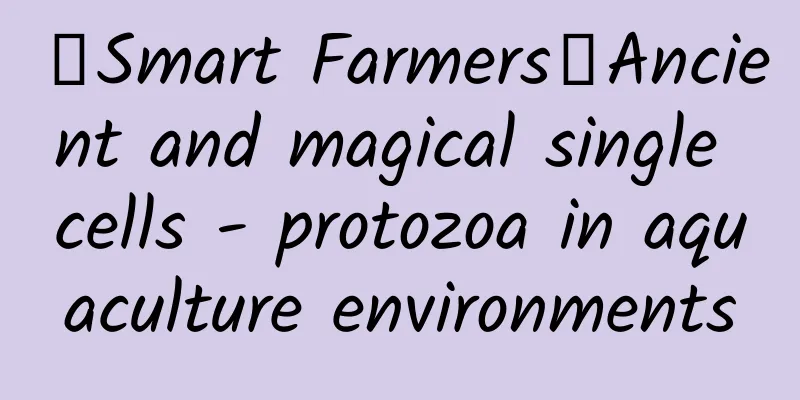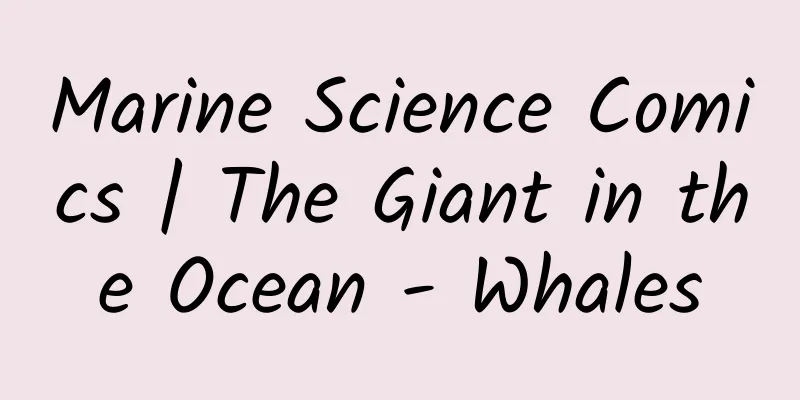【Smart Farmers】Ancient and magical single cells - protozoa in aquaculture environments

|
Take a drop of water from the breeding pond, it looks ordinary, but under the microscope, you can see an incredible miniature "zoo". In this "zoo" lives a class of single-celled animals with simple structure but complex functions, they are protozoa, also called protozoa. But what you may not know is that there is a "love-hate" relationship between single-celled protozoa and aquatic animals. A single person conquers the world As the earliest animals on Earth, the biggest feature of protozoa is that they are small and simple. The entire body of a protozoa is just one cell. The smallest individual on record is only 2 microns, and most are less than 100 microns. Compared with the top of a pin with a diameter of about 1 mm in the picture below, most protozoa appear very small. Protozoa vs. Tack Size Comparison "A sparrow may be small, but it has all the organs." Although protozoa have only one cell, as a complete life form, they can independently complete the basic "eating, drinking, defecating and urinating". They can be said to be all-round "babies". They have a cell mouth and straw for hunting, a food vacuole for digestion, a collecting tube, contractile vacuole, and cell anus for excretion, pseudopodia, flagella and cilia for movement, and ejecta for defense, etc. Protozoa ingestion "Food is the first necessity of the people", protozoa, like other animals, also need to eat. Although they are small, they are not picky eaters. Protozoa have a wide range of diets, and they like bacteria, algae, organic particles, and can even swallow small protozoa. However, when the food of certain protozoa is the body tissue of aquatic animals, these protozoa will become pathogenic organisms that can cause diseases in aquatic animals. Different forms of protozoa Love and hate relationship with aquatic animals Due to its long history, the protozoan family is huge, numerous, and widely distributed, with more than 30,000 species discovered. In order to better distinguish them, taxonomists divide them into four major families according to their different organs and methods of movement: Flagellates, Sarcopoda, Sporozoa and Ciliates. Among them, Sporozoa and Ciliates are the most directly related to protozoan diseases of aquatic animals. All members of the Sporozoa family can only parasitize inside the body and can parasitize any part of an animal. Therefore, this is also the family with the most species, the widest distribution, and the greatest harm among parasitic protozoa. Some experienced breeders are also very scared when they hear the word "spores". For example, myxosporeans that specialize in parasitizing fish usually contain 1-2 cytoplasms and 1-6 polar capsules. The polar capsule contains coiled polar filaments, which are structures for invading the host. Myxosporeans often have a mucus coat on their body surface, which is also the origin of their name. Myxosporea under the microscope The parasitism of myxosporeans can destroy and squeeze the normal tissues of fish, affect the normal functions of the parasitic parts, and reduce the overall immunity of fish, making it easy for other parasites to co-infect them, resulting in serious consequences. Originally, a single infection with myxosporea may not be fatal to fish, but after combining with other pathogens to form an infectious complex, the pathogenicity will be enhanced, often leading to the death of the infected fish. In addition, fish infected with myxosporeans often develop spots, vesicles, ulcers, etc. on their body and gill surfaces, which greatly affects their appearance, and thus their price and economic benefits. Unlike the Sporozoan family, most members of the Ciliate class are free-living, with parasitic species accounting for only a small proportion, and they are usually ectoparasites on the surface of aquatic animals, causing less harm. Ciliates are named for the densely distributed cilia on their body surface, which are equivalent to human hair, but have different functions. The main function of cilia is movement, and the coordinated swinging of cilia allows the worm to swim everywhere. Harmless ciliates often live randomly on the surface of aquatic animals, achieving a symbiotic balance with them. However, when the number of ciliates increases abnormally, such as the peritrichous ciliates, if they grow in large numbers on the surface of young shrimp, they will have difficulty in moving, affecting their feeding, leading to developmental delays and difficulty in molting. Parasitic species such as wheelworms live on the gill filaments of aquatic animals. When there are too many of them, the gill filaments will be severely damaged. Wheelworm Ciliates - Polyconchozoa Protozoa as parasitic pathogens can harm aquatic animals, but in addition to the harm, they are also "good neighbors" of aquatic animals. Many members of the protozoan family are very efficient bacteria eaters, and they control the number of other microorganisms in the water by directly ingesting or secreting specific substances. At the same time, they are also the favorite bait food of aquatic animals, providing important nutrition and energy for the growth of other animals, and are the link between primary producers and higher trophic levels, leading the underwater zoo to form a harmonious family. In addition, the "petite" protozoa are very picky about the water environment. Certain species can only survive in certain environmental conditions. If the living environment is not satisfactory, they will become listless and become the "suicide squad" of water quality warning. Therefore, in aquaculture, the water quality can be judged by observing the changes in the types and numbers of protozoa. How to use this "double-edged sword" well To make good use of protozoa, it is necessary to suppress harmful species in water bodies, increase the number and proportion of beneficial species, and at the same time maximize the beneficial effects of protozoa in water bodies and avoid harmful effects. First of all, we must control the aquaculture water environment, keep the water quality fresh, reduce changes in water environmental factors, avoid the formation of specific environmental conditions, and thus reduce the threats posed by harmful species. Secondly, we must be diligent in monitoring, early detection, and early prevention and control. Harmful species should be removed promptly. Once there are signs of explosive proliferation, targeted measures such as changing water and administering microecological preparations should be taken in a timely manner to keep the abundance of protozoa within a reasonable range. In addition, while controlling the total number of protozoa, the proportion of beneficial species should be increased. Just like the flora in our human intestines, the beneficial species and harmful species in the water environment are often in a relationship of increase and decrease. By increasing the beneficial species and establishing a healthy and stable breeding environment, protozoan diseases will not easily occur. Author: Zhang Xiumei (Engineer of Yantai Marine Economic Research Institute) Scientific review: Ji Daode (Professor at Yantai University, postgraduate tutor at the School of Oceanography, Yantai University) Planning: Liu Yadan (Researcher, National Chief Science Communication Expert) Zhang Quansheng (Professor of Yantai University) Co-ordinator: Wu Yuetong, Xie Yun Proofreader: Luo Yuchen (internship) |
<<: Wear a mask! Wear a mask! Important reminder
>>: “My hair turned white overnight”, can it turn black again?
Recommend
This article is enough for tips on how to maintain a Douyin account!
There are many debates online about "raising...
Adjustment of individual income tax withholding method to be implemented from July 1, 2020
On July 29, the State Administration of Taxation ...
I am a flasher, not an experienced driver!
I'm a brush machine dealer. Compared with the...
China's grain distribution map: How much grain do the three northeastern provinces produce each year?
China's grain distribution map Where are the ...
Guangdiantong backend operation guide!
Recently, many newbies have turned to information...
How to make users believe in your product?
Before users buy a product, their biggest concern...
11 economic phenomena necessary for planning and promotion
Introduction: Starting from the essence and findi...
Essential for operation: 3 quick-start typography tips
Although there are many typesetting principles on...
Five key directions for new media professionals in 2019
WeChat has quietly revamped its version recently!...
Where is the online application entrance for veterans’ preferential card? How to apply specifically? Attached is the application time for various regions in 2022!
Recently, many places in our country have been ap...
Congratulations! The second "space meeting"! The Shenzhou 16 astronauts successfully entered the Chinese space station
After the Shenzhou 16 manned spacecraft entered o...
Confession of systemic lupus erythematosus
I won't beat around the bush in my opening re...
Planning and promotion: an advanced guide to planning! (recommended collection)
Most planners have heard of theories such as USP,...
The era of extensive growth is over, and high-precision maps tighten the gray area
Twenty years ago, people basically relied on acti...
A brief discussion on refined operations in the ToB market
This sharing mainly elaborates on the refined ope...









